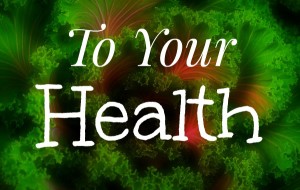Why are there so many foods in our diet that are bad for us? And how is this affecting our overall health and how well our bodies function?
 This article is going to be more of a series of questions for readers to think about than an article where everything is laid out for you and tied up in a neat package. I’d like to get us thinking about how we are taking care of the bodies that we have been given. Are we treating them like the Temples that they are?
This article is going to be more of a series of questions for readers to think about than an article where everything is laid out for you and tied up in a neat package. I’d like to get us thinking about how we are taking care of the bodies that we have been given. Are we treating them like the Temples that they are?
We have a serious problem in this country where the majority of our population have come to rely on readily available, inexpensive junk foods for the mainstay of their daily diets. Now when I say junk foods I am not necessarily saying that people are eating cookies and cakes for breakfast or filling up on chocolate bars for dinner. But they might as well be for all the difference it makes to their health and well being.
Big business has done a real number on the American population with false claims in their advertising, and big money lobbying to keep the truth from an unsuspecting public. While there are health advocates out there who are trying to get the truth into the hands of the general populace, the agencies that were set up by the government to oversee the safety of our environment and food supply have not done their job.
Instead of protecting the American people from these hazards, they have bowed to big money and corporate lobbyists, allowing many of these unsafe foods and fake foods to remain on our grocery shelves with labels that mislead and outright lie to us. So if our health is important to us we can no longer assume that others are working in our best interest. We must do our own research and look to the safety of our families ourselves.
 So here are some questions that we as consumers need to be asking ourselves about what we are eating, and why these unhealthy food products are even on our grocery store shelves to begin with.
So here are some questions that we as consumers need to be asking ourselves about what we are eating, and why these unhealthy food products are even on our grocery store shelves to begin with.
1.) Why is it that food dyes, many of which are derived from petroleum products, are not only found in our foods but are most frequently found in foods that are marketed to children? Some of the most obvious foods being imitation fruit drinks, gelatin, cereals, yogurt, and a variety of packaged desserts and candies.
I understand that this is what people of the last couple of generations have become used to, but our grandparents grew up and thrived without the benefit of rainbow colored cereals and candy. Meanwhile in the last 40 years or so, as the consumption of these processed foods has increased, conditions like ADHD and a host of other disorders have escalated to point where it is epidemic. Coincidence? Many concerned parents and health practitioners think not.
Perhaps it is time to return to a simpler way of eating in order to better control what we put into this intricate, yet delicate system of digestion which then affects every other part of our bodies from the quality of our hair and skin to our brain’s ability to function to its full capacity.
 Some of these artificial colors have been linked to conditions like hyperactivity, cancer and cell deterioration, so the big question is: why have these products been banned in places like Norway, Finland, Austria, France and the United Kingdom, but not in the United States?
Some of these artificial colors have been linked to conditions like hyperactivity, cancer and cell deterioration, so the big question is: why have these products been banned in places like Norway, Finland, Austria, France and the United Kingdom, but not in the United States?
2.) Another question might be why, in our quest for weight loss, have we been caught up in the quick fix lies of the low fat and fat-free food industry? The real culprit in the battle against obesity isn’t fat, at least not naturally occurring fats. The greatest contributing factors in the epidemic of weight gain in this country have been eating too much sugar and the increased use of artificial man-made fat.
One of the biggest lies in the food industry is the idea of fat-free and low fat foods. When they take out the natural fats in a food they have to replace it with something else or it won’t taste good. Those replacement flavor enhancers are nearly always imitation fats and or sugars. A perfect recipe for weight gain, not weight loss.
Our bodies need fat in order to be healthy, in fact we need a balance of EPA and DHA fish oils, monounsaturated fats, and yes, even saturated fats. There has been a lot of confusion and contradictory evidence on the subject of saturated fats, but the right kind of saturated fat, being naturally occurring fats like coconut oil, organic meats, and milk products are beneficial in reasonable amounts.
 You want to avoid like the plague man made Trans fats like margarine and shortening which are made through the process of hydrogenation, which manipulates vegetable and seed oils by adding hydrogen atoms. This process produces a rancid, thickened oil that only puts profits in the pockets of processed food manufacturers by prolonging the shelf life of their products.
You want to avoid like the plague man made Trans fats like margarine and shortening which are made through the process of hydrogenation, which manipulates vegetable and seed oils by adding hydrogen atoms. This process produces a rancid, thickened oil that only puts profits in the pockets of processed food manufacturers by prolonging the shelf life of their products.
The only thing it has done for consumers is elevate their cholesterol levels, and increase obesity rates, while increasing the numbers of patients suffering with heart disease, and Alzheimer’s.
Another attempt by the food industry to make money off of people’s attempts to lose weight was a fat substitute called Olestra. This product is an additive that was found in foods like fat-free potato chips, french fries, and corn chips.
Unfortunately Olestra didn’t just remove fat from foods; it also reduced the body’s ability to absorb essential vitamins like A, D, E, and K. It also had the added side effects of causing cramps, bloating, gas, and leaky gut. Olestra was banned in countries like China, Canada and the European Union. Because of the bad press it was receiving the manufacturers changed the name to Olean, using the word lean in the name to make it appear healthier. Under it’s new name it can still be found in some fat free foods.

To read more of Denise’s articles, click here.
Other sources of fats that it would be wise to avoid would be oils made from genetically modified plants that are sprayed heavily with pesticides such as corn oil, canola oil, soy oil, safflower oil, and sunflower oil. Some of these can be found in organic versions, but I would not use anything in that category that isn’t organic; they are simply too toxic for our bodies.
Food manufacturers are sneaky and are constantly thinking of new ways to make their profits, so consumers must be constantly on their guard. In fact, unless you are able to eat 100% organic, fixing everything you eat from scratch, it is virtually impossible to not get some of these substances into your diet. Our best hope is to minimize them the best we can.
In my next article I will continue to explore the foods we eat and how we can eat a more healthy diet.
Sources
http://bodyunburdened.com/artificial-food-dye/
http://www.livingnaturally.com/PDFDocs/1/1878d2450a24467b84fd63740fd8f720.PDF
About Denise Mastrocola
Denise is a Michigander turned Pennsylvanian, who has been writing stories since Elementary School. Denise won an award at the annual Lansing Youth Talent Show, when she was in 10th grade, for a short story entitled Procrastination is Fatal, but didn’t decide on writing as a career until she was 28 years old. While homeschooling her older children she spent 4 years working through a course from The Institute of Children’s Literature.
Through the years Denise’s children have had a variety of health issues, many of which have been linked to various sensitives; having spent more than 20 years researching and trying different things Denise has a boots on the ground view on healthier living.
Denise currently writes for 2 blogs and has several books in different stages of completion. She is planning to break ground in e publishing, and hopes to have her first Historical Fantasy book which is set during the renaissance, “Lisa, My Lisa?” ready by the first of the year.
Twitter •






